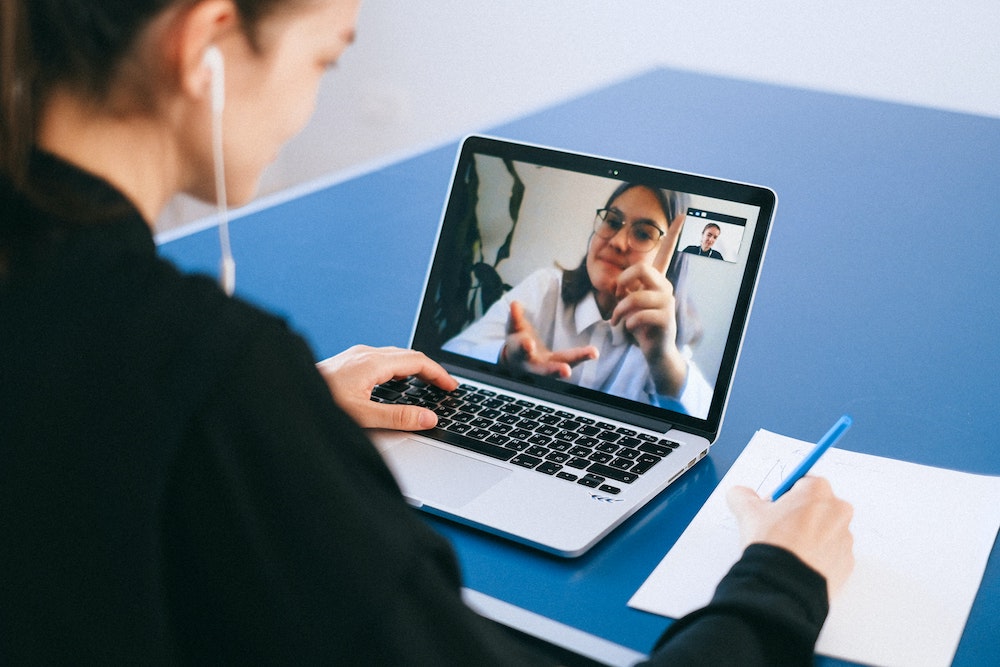Luckily, you already have all the skills you need to deliver the care your patients have come to expect from you. So here’s what you should know to begin your telegentics practice, confidently.
Stick to Old Routines
Just because the medium is different doesn’t mean you have to start from square one. Virtual appointments will feel completely foriegn, but if you make a few adjustments to the routines that have served you in the past, you’ll find they’re not so different after all.
Think about how you’d typically prepare for an appointment. First you’d schedule the appointment with your patient and give them all the information they need to make it to your office on time. To prepare for a virtual appointment, make sure your patient has access to the technology they need and are aware of the date and time of their appointment. Ask them to test their sound and video, and ensure stable wifi beforehand. Do the same yourself to be sure that everything is functioning. Ask that they find a confidential place to speak with you, and take their phone number just in case the video call fails.
On the day of an in-person appointment, you might make sure your office looks tidy and welcoming, review your patient’s clinical record, and use the bathroom just beforehand to avoid any interruptions. Similarly, set yourself up a well lit room before your virtual appointment and make sure your technology is tested the day of and ready to go. Open your patient’s clinical record, ideally on another screen, keep the contact for technical support handy, have your beverage of choice by your side, use the bathroom, and then begin.
When a patient first walks into the room, whether consciously or unconsciously, you quickly assess them to determine if they are safe and well. This skill is very useful during a video call. Rely on your instincts and judgements initially, and then take notes in their record as you would in person.
Just because you’re distancing from your coworkers doesn’t mean you can’t rely on them as you do when sharing an office. Continue to share and discuss cases, hold team meetings, and catch up, just do it remotely.
Communication is Key
As a Genetic Counselor, communicating clearly with your patient is not new to you, but in a virtual appointment it becomes even more important. Certain information that is implied or non-verbal in person must be explicitly stated in a video call.
To start your appointment, ask if your patient can see and hear you clearly, giving you the opportunity to adjust your setup if necessary. By taking the call consent is implied, but to be thorough it’s best to take and record verbal consent, and reassure your patient that the call is as confidential and secure as a standard appointment. Take a moment to introduce yourself and anyone in the room with you, even if they are off camera, and ask your patient to do the same even if they’re alone. It’s possible there will be technical disruptions, so let your patient know they can interrupt you, loudly if necessary, should they lose connection.
During the appointment you’ll be taking notes, so tell your patient when you’re occupied or reading another screen. Being familiar with your patient is a bonus, but even then patients may find video less personal, and may have difficulty opening up. Remember that while clear language is important, what you say is less important than how you make your patient feel.
Listen actively and ask open questions to make them feel comfortable. Don’t hesitate to ask for clarification when you need it, it's easier to miss something virtually.
To close the appointment, summarize the key points and ask if everything is clear. Discuss next steps and make sure the patient understands them before confirming and recording whether they are comfortable to meet via video chat again. Before signing off, tell the patient you are closing the call and say goodbye.
Use Your Tools
The most seamless virtual care is made possible by a strong wifi connection, appropriate software, a reliable camera and microphone, and a clinician who maximizes the tools at their disposal.
With a good wifi connection, appointments can flow almost exactly as they would in person. Minor technical breakdowns can be recovered from easily, but more major breakdowns and connection losses leave both parties feeling unprofessional. Luckily, the majority of the time a breakdown is minor, and the best course of action is to call back.
When sending information, get creative and utilize the massive resource bank available on the internet. Send online resources, imbed web links in emails, and get creative with formatting to make the information as clear as possible.
Ideally, take notes on your computer during the appointment to avoid having to retype what you’ve written. A Genomic Health Record™ like PhenoTips will save you the time wasted re-entering the same information in multiple places by embedding into your Electronic Health Record system.
Adapt
Overall, the response from clinicians to this unprecedented shift has been remarkably flexible and adaptive, but just like getting a new computer system, switching to telegenetics is not without its challenges. At first, there will be bugs, it will feel foriegn, you’ll inevitably mess something up. But you’ll continue to do your best because telegenetics is essential, and will continue to play an important role in medicine even once the pandemic has passed.
